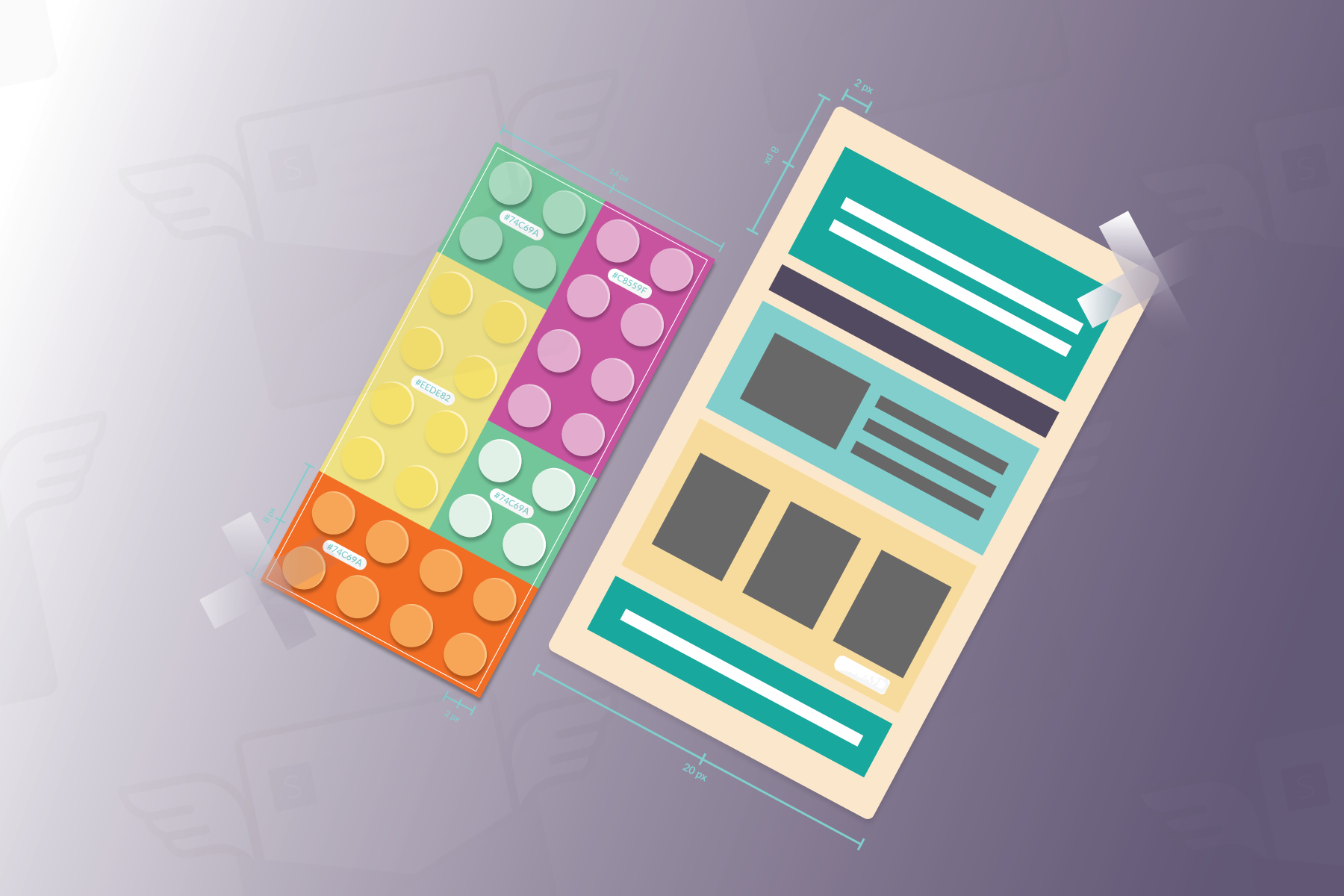
Email marketing produces a high ROI. But it is more labor-intensive as compared to the other marketing channels. This is because the whole email process – strategy building, email template creation, campaign management, and analysis is time-consuming. The overall time for deploying the campaign increases manifold when you add in the testing process. However, you can reduce the time frame for producing email templates by using modular email templates.
What Is A Modular Email Template?
When you create an email template using different predefined modules, it is known as a modular email template. It is easier to imagine it as building a colorful lego castle using bricks from other lego models. However, before you can commit to creating a modular email template design, you need a library of components that can be stacked and used interchangeably. An email marketer can easily make the required changes to the template design without changing the entire template design.
Why Are Modular Email Templates Important?
It takes about a week to come up with a functional email template. On top of that, it takes around 4 hours to approve the template before the campaign. Making changes to an email template is not an easy task. The email developer will be required to make extensive changes to the HTML and CSS scripts. If the final email template is rejected, the process starts all over again.
Read More: How To Whitelist An Email Address With Gmail, Outlook, Yahoo & Aol Mail
This is where modular design comes in. Modules allow you to break down the design elements of the template into simple design or content blocks. At first, it might seem daunting to set a modular approach for your email marketing campaign, but it is easier than it seems. Once the modules are created, tested, and approved, your campaigns essentially become an elaborate mix and match game.
What Are The Benefits Of Modular Email Templates?
-
Reusable
Initially, it might take some time and resources to create a library of modules. Once the library has been created, you can use an email generator to create your newer templates easily. It is comparatively more inexpensive to make changes to the module than making changes to an entire template.
-
Consistency
In the modules, even the smallest elements, like the hex-code, are pre-loaded. Hence, all your messages will carry a consistent brand identity. You can set the parameters and guidelines for the custom blocks and store them away in your library to be used later. Irrespective of the number of templates built, each will have similar design cues, right down to the last pixel.
-
Flexibility
Nowadays, emails are being optimized for various screens and email clients. Modular design techniques allow email marketers to render multiple designs and make the required changes quickly. Furthermore, you will be able to run multiple email campaigns with different email templates at the same time.
-
Automation
Email automation becomes more accessible as you can quickly come up with multiple templates. With a library full of different modules, you can create different sets of emails for separate triggers. For example, you can create an email template to welcome new users to your blog, or create birthday emails for your subscribers.
-
Deadlines
Email marketers often work with tight deadlines. In such scenarios, they are more likely to make mistakes if they are coming up with an email template design from scratch. Modules help avoid such mistakes during time-sensitive situations. Even if an email marketer uses the wrong module, they can easily swap it for another one without damaging the overall appearance of the email.
How to create modular designs?
-
Auditing
Run an audit to check how your current email templates are looking. You will notice that certain areas are being reused in your emails across the different campaigns. Now, it’s time to highlight the areas that can be converted into modules. Headers, footers, text and image body, socials, and unsubscribe button placement are some of the areas that can be modularized.
-
Designing
The next step is to design your modules. You will need to start by designing your content blocks and images blocks such that they will be able to drive attention to your CTA. Setting some guidelines for your designer will help them create similar modules without compromising the brand identity. You will need to optimize these modules for mobile screens as well. During this process, it is essential to mark out the areas that will be used in personalization tactics.
-
Building
Now is the time to start building your module library. You can create blocks of HTML code which will be later converted to email template designs. You can also create the modules for your email template designs on Gimp or Photoshop. This step also involves creating dedicated folders to organize the template in an easy-to-find manner.
-
Testing
Use A/B testing methods to determine which of your modules are performing better than others. You can use Google Analytics or Adobe Analytics to track the performance of the individual modules. You can then use insights from the data to improve your modules for future use.
Conclusion
A modular email template design mitigates the headache of having to worry about designing every single email from scratch constantly. By adopting this approach, you can easily create campaigns and engage with your subscribers. Lastly, you can optimize your ROI by reducing the unnecessary expenditure of repeatedly designing new email templates.
Author: Kevin George is the head of marketing at Email Uplers, which specializes in crafting Professional Email Templates, PSD to Email conversion, and Mailchimp Templates. Kevin loves gadgets, bikes & jazz, and he breathes email marketing. He enjoys sharing his insights and thoughts on email marketing best practices on email marketing blog.





